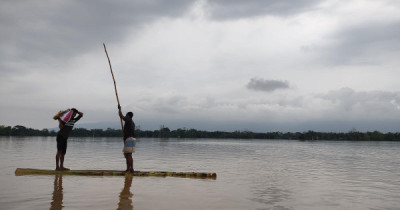Detailed Notes
Why You Should Avoid Visiting Assam During Monsoon
Assam experiences heavy to very heavy rainfall during the monsoon, which, although it nourishes the land, also creates several challenges for travelers. The region receives one of the highest rainfalls in India, and this weather pattern directly affects transportation, safety, and sightseeing opportunities.
1. Heavy Rainfall and Travel Discomfort
From June to early September, Assam receives continuous rainfall, often lasting for hours or even days. The heavy downpour leads to:
-
Reduced visibility while traveling on highways and hilly roads.
-
Slippery paths and muddy trails, making trekking or wildlife safaris unsafe.
-
High humidity, which can be uncomfortable for those not used to tropical climates.
While the rain brings out the natural beauty of Assam’s forests and fields, it also makes outdoor exploration extremely challenging.
2. Landslides and Flooding Risks
The most serious drawback of visiting Assam during monsoon is the risk of floods and landslides.
-
The Brahmaputra River and its tributaries frequently overflow during this time, causing flooding in low-lying areas like Kaziranga, Jorhat, and Dhemaji.
-
Hilly regions such as Haflong and Karbi Anglong are prone to landslides, disrupting both road and rail connectivity.
-
These natural events not only cause property damage but also pose a serious safety hazard for tourists.
3. Travel Disruptions and Unreliable Transportation
The monsoon weather leads to frequent travel disruptions across Assam:
-
Roads may get blocked due to landslides or waterlogging.
-
Flight delays or cancellations are common due to poor visibility.
-
River ferries and local transport may not operate regularly.Such unpredictability makes it difficult to follow a fixed itinerary, and travelers may end up spending extra days waiting for weather clearance.
4. Limited Access to Tourist Attractions
Many of Assam’s popular tourist destinations are either closed or difficult to access during the monsoon season:
-
Kaziranga National Park, home to the one-horned rhinoceros, remains closed from May to October due to high water levels.
-
Majuli Island, the world’s largest river island, often experiences flooding and erosion during this period.
-
Eco-tourism zones and tea estates are less accessible and sometimes shut for safety reasons.
If your goal is to explore Assam’s nature and wildlife, visiting during monsoon can severely limit your experience.
5. Health and Safety Concerns
The warm and humid weather during the rainy season increases the risk of:
-
Waterborne diseases such as cholera and diarrhea.
-
Mosquito-related illnesses like dengue and malaria.
-
Poor road conditions leading to accidents or injuries.
Traveling in such conditions can be uncomfortable, especially for families, elderly tourists, or solo travelers unfamiliar with the terrain.
Best Time to Visit Assam Instead
If you’re wondering when to plan your trip instead, the winter and spring months (October to April) are ideal:
-
Pleasant weather: Moderate temperatures and clear skies make travel enjoyable.
-
Open tourist sites: National parks, tea gardens, and river islands are open for visitors.
-
Festivals: You can experience vibrant cultural events like Magh Bihu (January) and Rongali Bihu (April) during this period.
This is also the best time for wildlife viewing, river cruises on the Brahmaputra, and cultural tourism across the state.
Quick Comparison: Monsoon vs. Winter Travel in Assam
| Aspect | Monsoon (June–Sept) | Winter/Spring (Oct–Apr) |
|---|---|---|
| Weather | Heavy rain, humid | Cool, pleasant |
| Travel Safety | Frequent disruptions | Safe and smooth |
| Tourist Access | Many sites closed | All sites open |
| Wildlife Viewing | Restricted | Excellent |
| Cost | Low (off-season) | Standard rates |
| Overall Experience | Risky and unpredictable | Comfortable and enjoyable |
Final Verdict: When Not to Visit Assam
Avoid visiting Assam during June to September, the peak monsoon period, when the state faces intense rainfall, floods, and travel challenges. While nature looks stunning during this season, the practical difficulties and safety risks outweigh the beauty.
For a smooth and memorable trip, plan your Assam visit between October and April, when the weather is welcoming, attractions are fully open, and the state reveals its cultural and natural wonders at their best.
